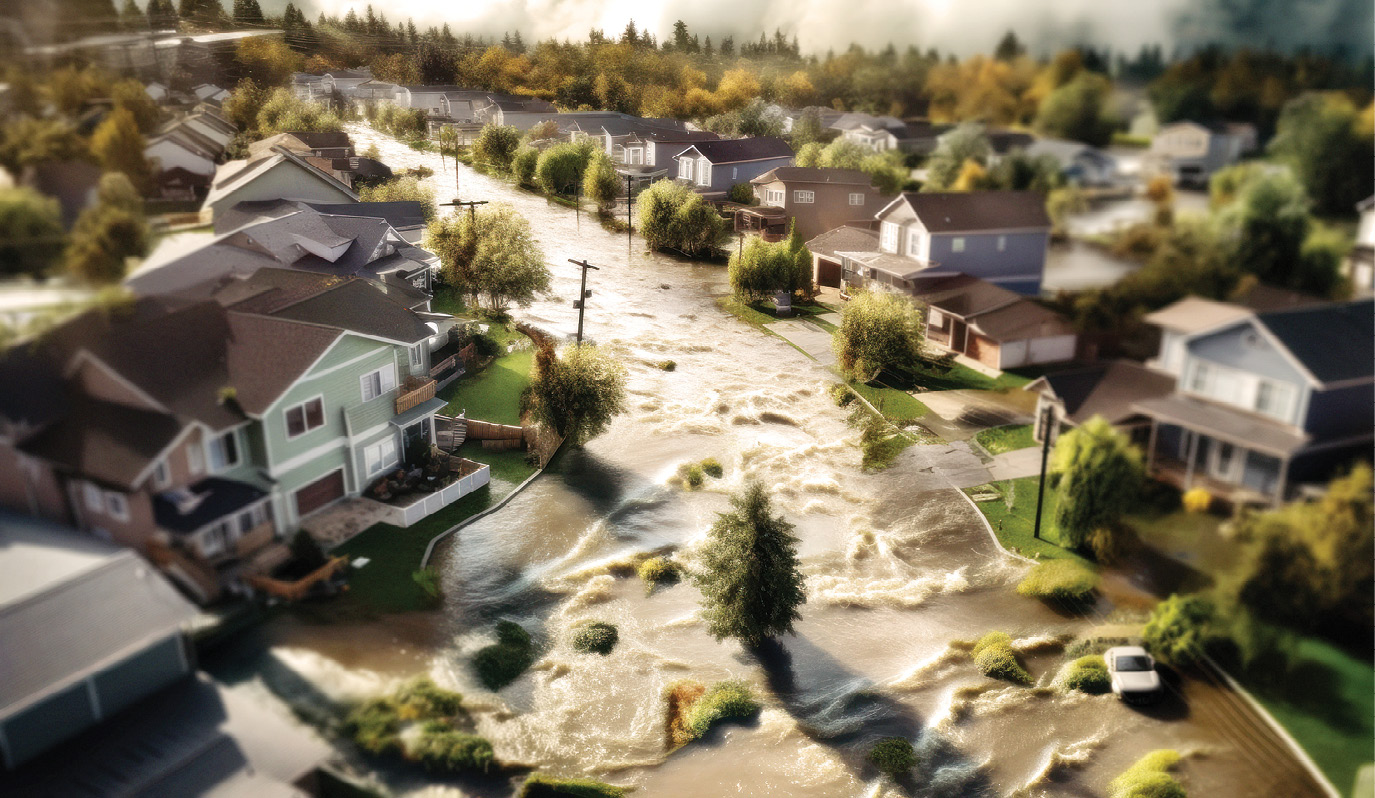Over the last seven years, Congress has issued 25 short-term reauthorizations of the National Flood Insurance Program (NFIP), hindering the program’s stability. As I write this, Congress is mulling testimony heard in early May 2023 for its deliberations for reauthorizing the NFIP beyond its current expiration date of September 30, 2023.

Testimony this time around has strongly emphasized the human and societal impacts of flooding, underscoring how mitigation ahead of flood events can build resilience so that suffering is less at the time of inundation and recovery is faster. While this is not new testimony, the depth and breadth of it now encourages me that Congress will allow the statutes and regulations to be adjusted in a way to emphasize that the NFIP is not just about building codes and insurance mandates, and instead shine the light where it always should have been: risk reduction. This could help us all in the face of increasing flooding frequency and the severity of those events.
Proposed changes to the federal statutes guiding the NFIP seek to update these laws to look forward instead of being mired in the 1968 “hurry up and create a program” language we have worked with for 55 years. One major update would be to strike the words “flood insurance rate maps” wherever that phrase appears and replace it with “flood hazard and flood risk information.” The April 2022 full implementation of Risk Rating 2.0 set flood insurance premiums in correlation to a new set of variables that do not include the zones shown on maps, so this is a long overdue change.
Other recommended changes refocus where data will be collected, analyzed, and published with respect to flood hazard and flood risk areas. This data would be in all populated areas and areas of possible population growth within both the 1% annual chance/100-year and 0.2% annual chance/500-year floodplains (the recommendation unfortunately still uses ancient misleading references to “years”). Study areas would be expanded to include those subject to residual risk due to possible failure of flood control structures. Remember the 2005 failure of the levee restraining Lake Pontchartrain after Hurricane Katrina and the additional water it poured into New Orleans: advising of residual risk is a significant improvement in public awareness.
In a long-awaited acknowledgment that flooding doesn’t honor jurisdictional boundaries, suggested statutory updates are now specific in stating that determinations of flood elevations and areas of special flood hazards would be “developed on a watershed or other appropriate technical basis.” This would improve hydrologic and hydraulic modeling, and potentially eliminate discrepancies at boundaries between political subdivisions.
The Technical Mapping Advisory Council (TMAC) continues to fill a significant role in NFIP relevance in proposed updates to the statutes. But instead of being charged with recommending standards and guidelines for “flood insurance rate maps” as currently stated, TMAC’s recommendations would apply to “collecting and maintaining flood hazard and flood risk information, including but not limited to flood hazard determinations.” Incidentally, TMAC’s annual reports are published on FEMA’s website at fema.gov/flood-maps/guidance-reports/technical-mapping-advisory-council/reports. TMAC’s recommendations are rooted in the tasks annually assigned by FEMA. As a result, they are often the basis for changes we later see incorporated into the floodplain management side of the agency, so the reports often provide a “heads up” for coming modifications to the NFIP.
Testimony during the latest hearings before the US Senate Committee on Banking, Housing, and Urban Affairs emphasized the risk aspect and added more of the human element to the usual technical commentary. Roy Wright, former head of FEMA’s Federal Insurance and Mitigation Administration and currently heading the Insurance Institute for Business and Home Safety (IBHS), noted that “there is no way to efficiently tackle meaningful flood mitigation actions at a property level… Neighborhood-scale endeavors are best.” His comments on community-wide pre-disaster planning and mitigation investments echoed a highly successful program called Project Impact initiated under FEMA Director James Lee Witt in the Carter administration but ditched by the G.W. Bush administration because it didn’t see dollars coming back in (failing to see financial—and societal—savings in not having to pay disaster assistance after a flood). Reviving that proactive approach would help many communities prevent suffering.
Patty Hernandez, executive director of Headwaters Economics, also focused on helping communities fund mitigation projects before disasters, noting the particular lack of resources in rural communities. Those scarce resources extend beyond lack of dollars to lack of staffing and technical expertise. Wealthier communities having such resources have an easier time winning competitive mitigation grants. Ms. Hernandez’s very specific recommendations to streamline how mitigation funding is accessed would make the process fairer for communities lacking resources to apply for grants under current rules.
Improved public education, more widely available community assistance, refocus on technical rather than insurance uses of mapping—these are just some of the highlights of current pressures to improve the NFIP. Of course, it would be immensely helpful if Congress would implement a long-term reauthorization rather than continuing its short-term patches. It’s hard for an agency to make improvements when it doesn’t know if the duties it is charged with will be changing, or if it will have funding to fulfill its responsibilities, or even if it will continue to exist. If it heeds the sweeping upgrades suggested in testimony and recommendations, Congress should have confidence that FEMA would be better able to serve the nation.